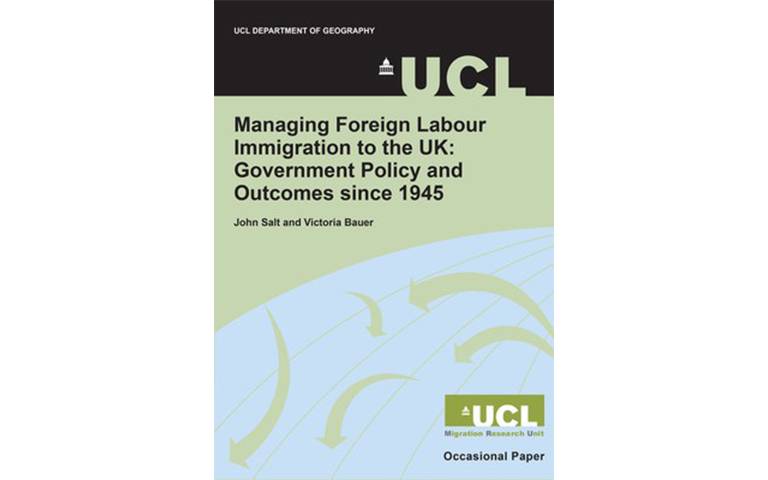Managing Foreign Labour Immigration to the UK since 1945
23 July 2020
John Salt reviews government policies and outcomes

A new study for the first time provides an overview of the UK work permit system for immigrants since 1945, including its 2009 transition into a points-based system.
It draws on 35 years of experience by Professor John Salt as the UK Correspondent to the OECD’s Group of Experts on international migration, supported by Victoria Bauer’s 15 years’ statistical work on migration data, as well as other projects for the UK government by UCL Geography’s Migration Research Unit.
The study shows a consistent inverse relationship between unemployment rates and work permit issues, and also how various supplementary special schemes have contributed to official labour immigration management.
Managed labour migration has also taken place within the broader context of total migration, including free movements and non-labour flows by families, students and asylum seekers, which also affects migration policy.
The main trends have been:
- Migration sources to the UK have become global: Sources of recruitment mobilised through the work permit have steadily broadened.
- Western Europe has remained a consistent source of labour: Since 1945, Western European immigrants have been integral to the UK labour market.
- Eastern Europe has become a resurgent major source: Flows from Eastern Europe, which largely died out after 1950, were strongly resuscitated after the fall of Communism.
- The continuing rise of India is a major feature: A salient feature of the UK labour management system over the past 30-40 years has been the continuing growth of India as a major source of (predominantly skilled) workers.
- ‘Old Commonwealth’ and other economically advanced countries continue to be important sources of labour: Links with the Old Commonwealth through labour management have been continuous.
- Competition for high-level skills is now the norm: The work permit system has always existed to recruit skilled and highly skilled workers in response to specific shortages. Some vacancies are in niche areas. Others, like doctors and nurses, offer more widely applicable skills.
- Government labour migration management and the mobility policies of large organisations are strongly interrelated: Migration system change has usually been associated with the business requirements of large employers.
- Despite the current emphasis on attracting highly skilled labour, the recruitment of the low skilled has always been a feature of policy: Various schemes have been used to recruit ‘low skilled’ labour (e.g. for agriculture), throughout the period.
In conclusion, three underlying principles serve as lessons for future policy:
- global sourcing has become the norm;
- there is a continuing need for policy flexibility in relation to changing labour needs;
- a symbiotic relationship has always existed between changing government policies and employer requirements.
 Close
Close

